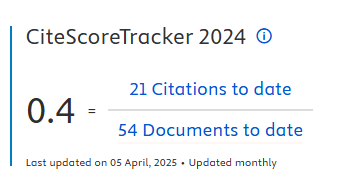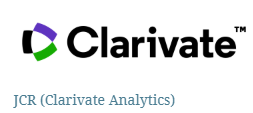Boosting technological innovation and innovation culture from an idea generation program: the experience of a Brazilian bank
DOI:
https://doi.org/10.5585/iji.v9i3.19282Keywords:
Bank, Innovation culture, Idea Generation Program, Ideas implementation, Incremental innovation, Technological innovation.Abstract
Objective of the study: The objectives of this study were to describe the strategy and the innovation results from an idea generation program (IGP) of a Brazilian bank.
Methodology: The study is predominantly descriptive; the method is the in-depth case study, and the data analysis was performed through content analysis.
Originality/Relevance: The IGP's implementation stage is critical due to the need for financial resources, people, and time. An IGP can generate not only incremental technological innovations but also boost the innovation culture. Innovations developed from an IGP can be effective in facing competition from fintechs and digital transformation.
Main results: The IGP's strategy is well-founded, as the result of 14 years of experience. However, there is still no clear strategy for measuring the impact of the implemented innovations. The IGP boosted both incremental technological (product, services, and process) and innovation culture. It has generated financial and non-financial results, and it predominantly follows the eastern model, recognizing employees’ ideas with non-financial rewards.
Theoretical/methodological contributions: An IGP is designable in three main stages: ideation, in which all employees can participate, giving ideas for solving the problems indicated by the boards; selection, when a selection board chooses the ideas with the most significant potential for implementation and generating results; and implementation, when the selected ideas are transformed into innovations.
Social /management contributions: A bank’s idea generation program is effective to boost technological innovation and innovation culture, which allow to face the fintechs and other essential players in the financial market, as well as to promote internal engagement and manage digital transformation, and deal with the VUCA (volatility, uncertainty, complexity, and ambiguity) scenario.
Downloads
References
Adams, R., Bessant, J., & Phelps, R. (2006). Innovation management measurement: A review. International journal of management reviews, 8(1), 21-47. https://doi.org/10.1111/j.1468-2370.2006.00119.x
Åmo, B. W. (2005). Employee innovation behavior. Ph.D. Thesis (Doctor Oeconomia) - Bodø Graduate School of Business, Norway.
Anderson, N., Potočnik, K., & Zhou, J. (2014). Innovation and creativity in organizations: A state-of-the-science review, prospective commentary, and guiding framework. Journal of management, 40(5), 1297-1333. https://doi.org/10.1177%2F0149206314527128
Barbieri, J. C., Álvares, A. C. T., & Cajazeira, J. E. R. (2009). Gestão de ideias para inovação contínua. Brazil. Bookman Editora.
Barbieri, J. C., Álvares, A. C. T., & Cajazeira, J. E. R. (2009b). Geração de ideias para inovações: estudos de casos e novas abordagens. Revista Gestão Industrial, 5(3). https://doi.org/10.3895/S1808-04482009000300001
Barcelos, R. (2017). A dinâmica das capacidades–elementos para a gestão estratégia à luz da teoria evolucionária. Gestão e Sociedade, 11(30), 1934-1962. https://doi.org/10.21171/ges.v11i30.2159
Bardin, L. (2011). Análise de Conteúdo. São Paulo, SP: Edições 70.
Baregheh, A., Rowley, J., & Sambrook, S. (2009). Towards a multidisciplinary definition of innovation. Management decision, 47(8),1323–1339. https://doi.org/10.1108/00251740910984578
Borchardt, P., & dos Santos, G. V. (2014). Gestão de ideias para inovação: transformando a criatividade em soluções práticas. RAI Revista de Administração e Inovação, 11(1), 203-237. https://doi.org/10.5773/rai.v11i1.1185
Brattström, A., Frishammar, J., Richtnér, A., Pflueger, D. (2018). Can innovation be measured? A framework of how measurement of innovation engages attention in firms. Journal of Engineering and Technology Management, 48, 64-75. https://doi.org/10.1016/j.jengtecman.2018.04.003
Chandler, G. N., Keller, C., & Lyon, D. W. (2000). Unraveling the determinants and consequences of an innovation-supportive organizational culture. Entrepreneurship theory and practice, 25(1), 59-76. https://doi.org/10.1177%2F104225870002500106
Cooper, R. G. (1990). Stage-gate systems: a new tool for managing new products. Business horizons, 33(3), 44-54. https://citeseerx.ist.psu.edu/viewdoc/download?doi=10.1.1.474.1777&rep=rep1&type=pdf
Cooper, R. G., & Edgett, S. J. (2012). Best practices in the idea-to-launch process and its governance. Research-Technology Management, 55(2), 43-54. https://doi.org/10.5437/08956308X5502022
David, D. E. H., Carvalho, H. G. D., & Penteado, R. S. (2011). Gestão de ideias. Curitiba, PR: Aymará. http://repositorio.utfpr.edu.br/jspui/handle/1/2058
Dobni, C. B., & Sand, C. (2018). Strategy shift: Integrating strategy and the firm’s capability to innovate. Business Horizons, 61(5), 797-808. https://doi.org/10.1016/j.bushor.2018.06.002
Dorow, P. F., de Medeiros, C., de Souza, J. A., & Dandolini, G. A. (2013). Barreiras e facilitadores para a geração de ideias. Revista Eletrônica de Estratégia & Negócios, 6(3), 105- 124. https://pdfs.semanticscholar.org/ee7f/75538f4fc00dae9ddb124cd9613195bc1851.pdf
Dorow, P., Dávila, G., Varvakis, G., & Vallejos, R. (2015). Generation of ideas, ideation and idea management. Navus-Revista de Gestão e Tecnologia, 5(2), 51-59. https://dialnet.unirioja.es/descarga/articulo/5168663.pdf
Dosi, G., Grazzi, M., & Moschella, D. (2015). Technology and costs in international competitiveness: from countries and sectors to firms. Research policy, 44(10), 1795-1814. https://doi.org/10.1016/j.respol.2015.05.012
Drucker, P. (2004). La disciplina de la innovación. Harvard business review, 82(8), 3-7. https://www.academia.edu/download/34744903/_the_discipline_of_innovation.pdf
Du Plessis, M. (2007). The role of knowledge management in innovation. Journal of knowledge management, 11(4), 20-29. https://doi.org/10.1108/13673270710762684
Feldens, M. A., Maccari, E. A., & Garcez, M. P. (2012). Barreiras para a inovação em produtos nas pequenas e médias empresas de tecnologia no Brasil. BBR-Brazilian Business Review, 9(3), 1-24. https://www.redalyc.org/pdf/1230/123023629001.pdf
Frankenberger, K., Weiblen, T., Csik, M., & Gassmann, O. (2013). The 4I-framework of business model innovation: A structured view on process phases and challenges. International journal of product development, 18(3-4), 249-273. http://dx.doi.org/10.1504/IJPD.2013.055012
Froehlich, C. (2016). O programa de ideias para inovação em uma empresa do segmento químico. Revista de Administração IMED, 6(2), 191-205. https://doi.org/10.18256/2237-7956/raimed.v6n2p191-205
Gault, F. (2018). Defining and measuring innovation in all sectors of the economy. Research policy, 47(3), 617-622. https://doi.org/10.1016/j.respol.2018.01.007
Giones, F., Brem, A., & Berger, A. (2019). Strategic decisions in turbulent times: Lessons from the energy industry. Business Horizons, 62(2), 215-225. https://doi.org/10.1016/j.bushor.2018.11.003
Gołaś, H., Mazur, A., Gruszka, J., & Szafer, P. (2016, August). Application of the suggestion system in the improvement of the production process and product quality control. In IOP Conference Series: Materials Science and Engineering (Vol. 145, No. 6, p. 062005). IOP Publishing. https://doi.org/10.1088/1757-899X/145/6/062005
Haldma, T., Näsi, S., Grossi, G., Saunila, M., & Ukko, J. (2012). A conceptual framework for the measurement of innovation capability and its effects. Baltic Journal of Management, 7(7), 355-375. https://doi.org/10.1108/17465261211272139
Hallstedt, S. I., Thompson, A. W., & Lindahl, P. (2013). Key elements for implementing a strategic sustainability perspective in the product innovation process. Journal of Cleaner Production, 51, 277-288. https://doi.org/10.1016/j.jclepro.2013.01.043
Janssen, M. J., & Castaldi, C. (2018). Services, innovation, capabilities, and policy: Toward a synthesis and beyond. Science and Public Policy, 45(6), 863-874. https://doi.org/10.1093/scipol/scy017
Keles, O., & Battal, T. (2017). A model for innovation culture management in organizations (IVALUE 7). International Journal of Innovation, 5(3), 361-374. http://www.redalyc.org/articulo.oa?id=499151573007
Kitsuta, C. M., & Quadros, R. (2019). Gestão da Inovação em empresas brasileiras de serviços de tecnologia da informação: modelos de inovação planejada, de aplicação rápida e de inovação deliberada a posteriori. Cadernos EBAPE. BR, 17, 1048-1061. https://doi.org/10.1590/1679-395174440
Klein, K. J., & Sorra, J. S. (1996). The challenge of innovation implementation. Academy of management review, 21(4), 1055-1080. https://doi.org/10.5465/amr.1996.9704071863
Rosenberg, N., & Landau, R. (Eds.). (1986). The Positive sum strategy: harnessing technology for economic growth. Washington, DC: National Academies Press.
Kühl, M. R., & da Cunha, J. C. (2013). Obstáculos à implementação de inovações no Brasil: como diferentes empresas percebem sua importância. BBR-Brazilian Business Review, 10(2), 1-25. https://www.redalyc.org/pdf/1230/123027923001.pdf
Lawrence, K. (2013). Developing leaders in a VUCA environment. UNC Executive Development, 1-15. http://www.cfmt.it/sites/default/files/af/materiali/Developing-leaders-in-a-vuca-environment.pdf
Machado, R. T. M. (1998). Fundamentos sobre o estudo da dinâmica das inovações no agribusiness. Revista de Administração Contemporânea, 2(2), 127-141. https://www.scielo.br/j/rac/a/4gFwmwsgM9NMYn3sgVphfMM/?format=pdf&lang=pt
Mack, O., Khare, A., Krämer, A., & Burgartz, T. (Eds.). (2015). Managing in a VUCA World. Berlin, Germany: Springer. https://doi.org/10.1007/978-3-319-16889-0
McKelvey, M. (2016). Firms navigating through innovation spaces: a conceptualization of how firms search and perceive technological, market and productive opportunities globally. Journal of evolutionary economics, 26(4), 785-802. https://doi.org/10.1007/s00191-016-0478-0
Menzel, H. C., Aaltio, I., & Ulijn, J. M. (2007). On the way to creativity: Engineers as intrapreneurs in organizations. Technovation, 27(12), 732-743. https://doi.org/10.1016/j.technovation.2007.05.004
Miguez, V. B. (2012). Uma abordagem de geração de ideias para o processo de inovação (Master’s Thesis). Universidade Federal de Santa Catarina, Florianópolis, Brazil. http://repositorio.ufsc.br/xmlui/handle/123456789/100942
Mussi, F. B., & Spuldaro, J. D. (2008). Barreiras à inovação e a contribuição da perspectiva institucional: um estudo de múltiplos casos. INMR-Innovation & Management Review, 5(1), 36-52. https://www.revistas.usp.br/rai/article/download/79099/83171
Nelson, R. R., & Winter, S. G. (2009). An evolutionary theory of economic change. Cambridge, MA: Harvard University Press.
Organisation for Economic Co-operation and Development., & Statistical Office of the European Communities (2018), Oslo Manual 2018: Guidelines for Collecting, Reporting and Using Data on Innovation (4th ed.). The Measurement of Scientific, Technological and Innovation Activities, OECD Publishing, Paris/Eurostat, Luxembourg. https://doi.org/10.1787/9789264304604-en
Perides, M. P. N., de Vasconcellos, E. P. G., & Vasconcellos, L. (2020). A gestão de mudanças em projetos de transformação digital: estudo de caso em uma organização financeira. Revista de Gestão e Projetos, 11(1), 54-73. https://periodicos.uninove.br/gep/article/download/16087/8126
PessalI, H., & Fernández, R. (2006). Inovação e teorias da firma. Economia da inovação tecnológica. Campinas, SP: Hucitec.
Quandt, C. O., Silva, H. D. F. N., Ferraresi, A. A., & Frega, J. R. (2014). Programas de gestão de ideias e inovação: as práticas das grandes empresas na região sul do Brasil. RAI Revista de Administração e Inovação, 11(3), 176-199. https://doi.org/10.11606/rai.v11i3.100220
Sabri, Y., Micheli, G. J., & Nuur, C. (2018). Exploring the impact of innovation implementation on supply chain configuration. Journal of Engineering and Technology Management, 49, 60- 75. https://doi.org/10.1016/j.jengtecman.2018.06.001
Sacramento, P. M., & Teixeira, R. M. (2014). Implementação de ações inovadoras e empreendedorismo: Estudo de múltiplos casos em empresas hoteleiras de pequeno porte. Caderno Virtual de Turismo, 14(2). http://www.ivt.coppe.ufrj.br/caderno/index.php/caderno/article/viewFile/874/398
Sampieri, R. H., & Collado, C. F. Lucio. MPB (2013). Metodologia de pesquisa. Porto Alegre, RS: Penso. http://repositorio.unicentro.br:8080/jspui/handle/123456789/1279
Sarkar, S., & Carvalho, L. (2006). Inovação no sector dos serviços: uma nova área de investigação. Tourism & Management Studies, 2, 52-59. https://www.researchgate.net/profile/Luisa-Carvalho-10/publication/277215911_Inovacao_no_Sector_dos_Servicos_Uma_Nova_Area_de_Investigacao/links/57cd8aed08aed67896ffb898/Inovacao-no-Sector-dos-Servicos-Uma-Nova-Area-de-Investigacao.pdf
Seshadri, D. V. R., & Tripathy, A. (2006). Innovation through intrapreneurship: The road less travelled. Vikalpa, 31(1), 17-30. https://doi.org/10.1177%2F0256090920060102
Singh, S., Akbani, I., Dhir, S. (2020). Service innovation implementation: a systematic review and research agenda. The Service Industries Journal, 40(7-8), 491-517. https://doi.org/10.1080/02642069.2020.1731477
Snyder, H., Witell, L., Gustafsson, A., Fombelle, P., & Kristensson, P. (2016). Identifying categories of service innovation: A review and synthesis of the literature. Journal of Business Research, 69(7), 2401-2408. https://doi.org/10.1016/j.jbusres.2016.01.009
Tidd, J., & Bessant, J. (2015). Gestão da inovação. Porto Alegre, RS: Bookman.
Tigre, P. B. (2014). Gestão da inovação: a economia da tecnologia no Brasil. Rio de Janeiro, RJ: Elsevier. https://adm2016sjcampos.files.wordpress.com/2017/03/gestao-da-inovacao-paulo-tigre.pdf
Tushman, M. L. (1977). Special boundary roles in the innovation process. Administrative science quarterly, 22(4), 587-605. https://doi.org/10.2307/2392402
Van Dijk, C., & Van Den Ende, J. (2002). Suggestion systems: transferring employee creativity into practicable ideas. R&D Management, 32(5), 387-395. https://doi.org/10.1111/1467-9310.00270
Yin, R. K. (2017). Case study research and applications: Design and methods. Los Angeles, CA: Sage publications.
Downloads
Published
How to Cite
Issue
Section
License
Copyright (c) 2021 International Journal of Innovation

This work is licensed under a Creative Commons Attribution-NonCommercial-ShareAlike 4.0 International License.
- Abstract 614
- PDF 568













